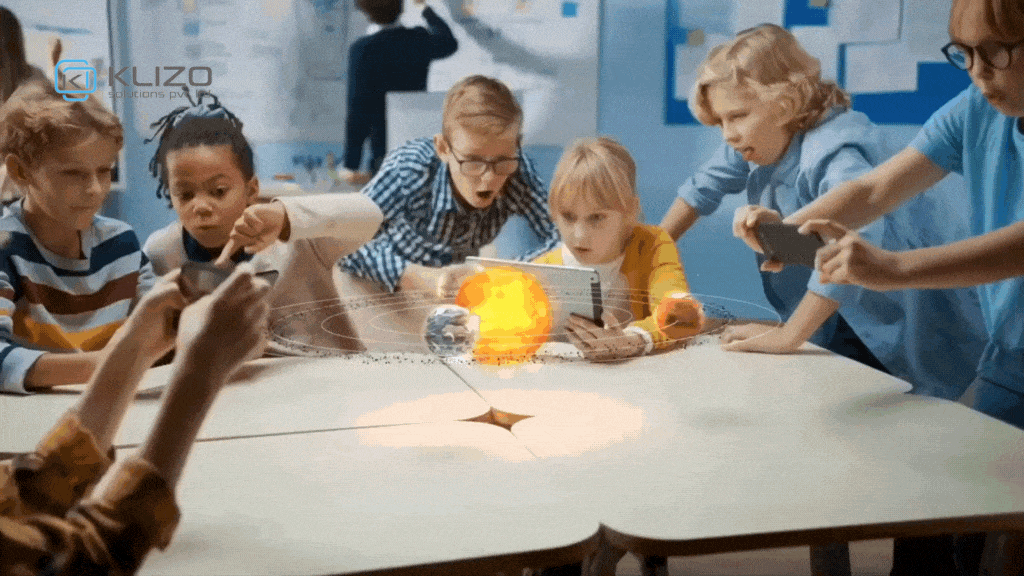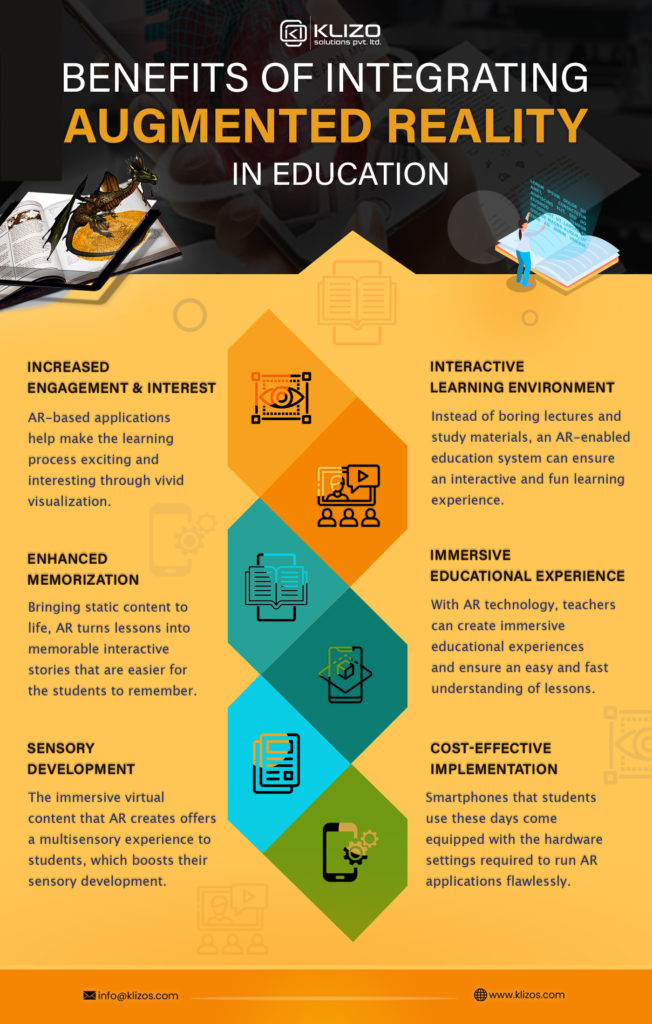


Whenever we say Augmented Reality, the famous mobile game Pokemon Go pops into our heads! After all, it was a significant milestone for AR.
But AR is a lot more than chasing around Pokemon characters!
Many of us don’t realize that AR is ever-present in our lives. Be it mobile apps like Snapchat or movies like Minority Report, Avatar, or Iron Man – we can see AR in action in all these. There are plenty of examples of AR use in business apps as well. And now, it’s time for AR in education sector.
AR is making learning systems swift and effective and the learning experience more interactive and innovative! Believe it or not, integration of AR in education sector is presently one of the hottest trends!
If you are wondering how AR can help in education or what has led to the growing application of AR in education, then here we go!
Interactive learning has always been one of the biggest powers of AR in education sector that comes with enormous engaging ability.
When AR first came out, it was a revelation in the tech industry. People were amazed by the benefits of AR and the visual prowess it brought. And now, it is helping us seamlessly interact with visual graphic experiences by turning augmented computerized graphics into real-world examples!
For instance, if you move your smartphone or tablet to an empty space, AR lets you see an object on your screen through its computerized graphics., making the learning experience extremely engaging.
So, when it comes to allowing the students to gain knowledge in a subject matter through rich visuals and offering an immersive and interactive experience, we can say that AR is the go-to tech! Plus, with its sensory development capabilities, AR in education sector also helps students to remember essential information!
Textbook reading alone can not always engage students, encourage them to learn more about it, or evoke their curiosity. But their interest increases when they see the same thing in a real environment or interact with what they are reading on the pages of textbooks.
For example, imagine teaching the students about a historical monument that no longer exists in reality. Now, what if the students can experience a virtual tour of the past though they cannot visit the monument in real life? Well, it is possible when you use augmented reality for teaching!
With AR in education sector, you can point a smartphone toward the textbook image of the monument, and voila! You will have a 3D model of the historical monument with all related information appearing on the smartphone screen. No doubt, experiences like these can boost the interest of students!
Arloon Geometry, Merge Cube, and Elements 4D are examples of augmented reality apps for teachers to use in classrooms to explain a subject, help students test out what they have learned, and give a visual representation of things to boost student interest.

The ease of sharing and accessing information matters big time in the education industry! And by harnessing the power of AR in education sector, it is possible to enhance information accessibility and effectiveness.
While educational institutions inviting admissions can use AR-enabled prospectus to give the applicants a closer look at the campus, courses, culture, and facilities, students can know about the institution they are applying to join in detail using the same. One of the major benefits of augmented reality in education!
Even institutions with huge campuses can use AR to provide new students with a comfortable induction for their new environment. They can opt for AR-enabled remote orientation sessions to give the newly admitted students directions and guide them through the campus facilities.
Reputed universities like Cal Poly Pomona and the Community College of Beaver County are already using augmented reality to guide the students to explore the campus in a fun and informative way.
Those days are not far when educational institutions will use AR-based treasure hunt games to help the new entrants familiarize themselves with the new campus environment.
AR experience includes 75% actual reality and 25% virtual reality. So it means AR does not change the real environment but integrates virtual objects in actual surroundings to make it more compelling to the real world.
And this helps students of all ages and levels easily understand a concept, learn it and become more familiar with modern education systems.
Whether kids are learning rhymes for kindergarten or adults are trying to develop skills for a new job, AR in education sector can help with the learning experience.
Augmented reality apps for education, like NarratorAR and Catchy Words AR, help kids aged between 3-7 learn writing engagingly. These applications visually process the texts and make handwriting a piece of cake!
Another example of Augmented reality in education apps is Duolingo which helps students to learn different languages.
AR in education sector also makes the collaboration between teachers and students seamless and fun. For example, with AR’s ability to eliminate boring pen and paper, educators can make the students walk around their rooms and find AR-based letters to guess the correct answer!
Furthermore, by using augmented reality in the classroom with speech technology, educators can now give a detailed description of the subject in a voice format to guide the students through the AR visuals, ensure better collaboration between teachers and students, and boost student engagement in classes.
And this is one major reason why more and more emerging e-learning platforms are using AR for learning to also enhance the mode of communication between teachers and students. E-learning helps students to engage in a virtual environment where they can learn how a concept happens.
Plus, using immersion and visualization techniques, AR has taken professional development to the next level. Be it for healthcare education or military training, space training, or manufacturing training, corporate and government sectors are using AR to educate and train their employees.
Given the increasing integration of the latest technologies in the education industry, keeping up with the competition is a must! And to do that, focusing on the use of AR in education should be on your priority list.
After all, the standout advantages of AR have already started to revolutionize the education industry. So much so that the global EdTech industry is expected to reach $125 billion by the end of 2023, as per AR in education statistics reports. So, don’t sit back and let your competitors take over!
Consult with reliable tech professionals like us, Klizo Solutions, and leverage the benefits of integrating the latest and futuristic techs in your educational apps.
Remember, making the educational process seamless, interactive, and fun for the students is how you can succeed as an EdTech business in 2022 and beyond.
So, do not wait anymore! Get in touch with us today and get not just some AR solutions but expert consultations that might benefit your EdTech business in the long run!
Previous article
Marketing Myopia 2022: Don’t Let It Cripple Your Business Growth
Joey Ricard
Klizo Solutions was founded by Joseph Ricard, a serial entrepreneur from America who has spent over ten years working in India, developing innovative tech solutions, building good teams, and admirable processes. And today, he has a team of over 50 super-talented people with him and various high-level technologies developed in multiple frameworks to his credit.

Subscribe to our newsletter to get the latest tech updates.